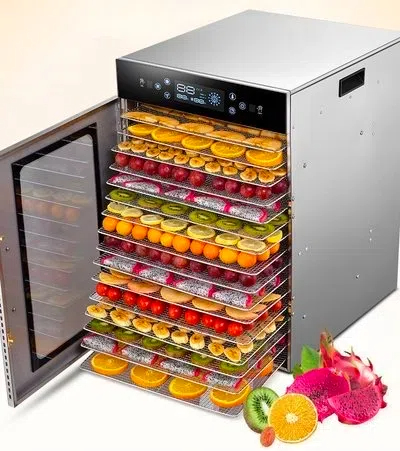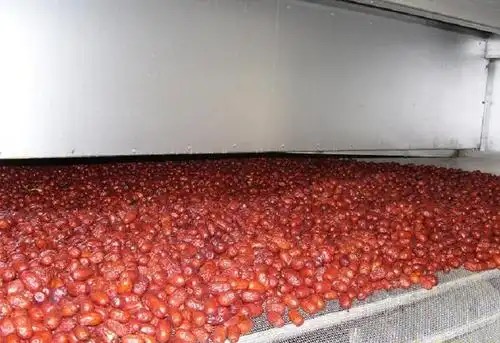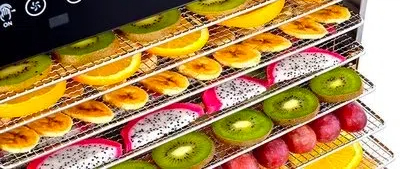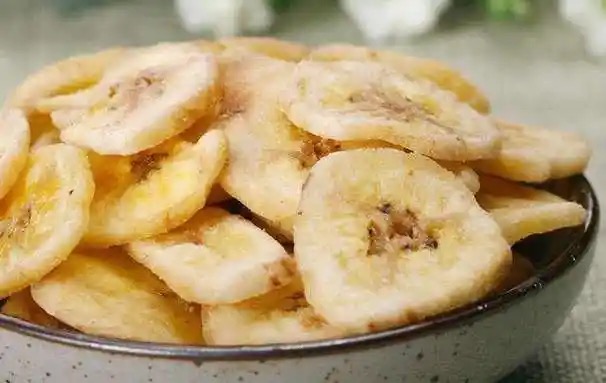
Content Menu
● Introduction
● Understanding Food Drying
● Types of Food Dryers
● How Food Dryers Work
● Benefits of Using Food Dryers
● Tips for Effective Food Drying
● Conclusion
● Frequently Asked Questions
>> 1. What foods can be dried?
>> 2. How long does it take to dry food?
>> 3. Can I use a regular oven to dry food?
>> 4.What is the best temperature for drying fruits?
>> 5.How do I store dried foods?
Introduction
Food drying is an ancient preservation method that has stood the test of time. It not only extends the shelf life of various foods but also concentrates their flavors and nutrients. With the advent of modern technology, food dryers have become an essential kitchen appliance for health-conscious individuals and culinary enthusiasts alike. This article delves into the intricacies of food drying, exploring its benefits, methods, and best practices.

Understanding Food Drying
Food drying is the process of removing moisture from food to inhibit the growth of microorganisms and enzymes that cause spoilage. By reducing the water content, dried foods can last significantly longer than their fresh counterparts. This method is particularly beneficial for fruits, vegetables, and meats, allowing for a diverse range of snacks and ingredients that can be stored for months or even years.
The benefits of dehydrating food extend beyond mere preservation. Dried foods retain most of their nutritional value, making them a healthy alternative to processed snacks. Additionally, the drying process intensifies flavors, resulting in delicious, concentrated tastes that can enhance various dishes.
Types of Food Dryers
There are several types of food dryers available on the market, each with its unique features and functionalities. The most common types include:
1. Electric Dehydrators: These appliances use heat and airflow to dry food efficiently. They come with multiple trays, allowing users to dry large batches simultaneously.
2. Solar Dehydrators: Utilizing the sun's energy, these dehydrators are eco-friendly and cost-effective, although they require more time and favorable weather conditions.
3. Oven Drying: While not as efficient, a conventional oven can be used for drying food. However, it may require constant monitoring and adjustment of temperatures.

How Food Dryers Work
Food dryers operate on a simple principle: they use heat and airflow to evaporate moisture from food. The process begins with slicing the food into uniform pieces to ensure even drying. The food is then placed on trays within the dehydrator, where warm air circulates around it.
The heat source warms the air, which is then blown over the food. As the warm air absorbs moisture, it becomes humid and is expelled from the dehydrator. This cycle continues until the food reaches the desired dryness level. Most food dryers come with adjustable temperature settings, allowing users to customize the drying process based on the type of food being dried.
Benefits of Using Food Dryers
Using a food dryer offers numerous advantages:
1. Nutritional Retention: Dried foods maintain their vitamins and minerals, making them a healthy snack option.
2. Cost-Effectiveness: Dehydrating food at home can save money compared to purchasing pre-packaged dried foods.
3. Convenience: Dried foods are lightweight and easy to store, making them perfect for camping, hiking, or quick snacks.
Tips for Effective Food Drying
To maximize the benefits of food drying, consider the following tips:
1. Preparation: Wash and slice fruits and vegetables evenly to ensure uniform drying. Blanching certain vegetables before drying can help preserve color and nutrients.
2. Temperature Control: Different foods require different drying temperatures. For instance, fruits typically dry best at 135°F to 145°F (57°C to 63°C), while herbs can be dried at lower temperatures.
3. Storage: Once dried, store foods in airtight containers in a cool, dark place to prolong their shelf lifeCommon Mistakes to Avoid
While food drying is relatively straightforward, there are common mistakes that can hinder the process:
1. Overcrowding Trays: Placing too much food on a tray can restrict airflow, leading to uneven drying.
2. Ignoring Temperature Settings: Using incorrect temperatures can result in improperly dried food, which may spoil quickly.
3. Not Monitoring Progress: Regularly checking the drying process can help prevent over-drying or under-drying.
Conclusion
Food drying is a valuable skill that not only enhances food preservation but also promotes healthier eating habits. With the right equipment and knowledge, anyone can enjoy the benefits of dried foods at home. Whether you're looking to create healthy snacks or preserve seasonal produce, investing in a food dryer can be a game-changer in your kitchen.

Frequently Asked Questions
1. What foods can be dried?
A variety of fruits, vegetables, herbs, and meats can be dried.
2. How long does it take to dry food?
Drying times vary based on the type of food and the method used, typically ranging from a few hours to a full day.
3. Can I use a regular oven to dry food?
Yes, but it may not be as efficient as a dedicated food dehydrator.
4.What is the best temperature for drying fruits?
Generally, fruits should be dried at temperatures between 135°F to 145°F (57°C to 63°C).
5.How do I store dried foods?
Store dried foods in airtight containers in a cool, dark place to maintain freshness.












